Jordi Luque
Robustness assessment of large audio language models in multiple-choice evaluation
Oct 06, 2025Abstract:Recent advances in large audio language models (LALMs) have primarily been assessed using a multiple-choice question answering (MCQA) framework. However, subtle changes, such as shifting the order of choices, result in substantially different results. Existing MCQA frameworks do not account for this variability and report a single accuracy number per benchmark or category. We dive into the MCQA evaluation framework and conduct a systematic study spanning three benchmarks (MMAU, MMAR and MMSU) and four models: Audio Flamingo 2, Audio Flamingo 3, Qwen2.5-Omni-7B-Instruct, and Kimi-Audio-7B-Instruct. Our findings indicate that models are sensitive not only to the ordering of choices, but also to the paraphrasing of the question and the choices. Finally, we propose a simpler evaluation protocol and metric that account for subtle variations and provide a more detailed evaluation report of LALMs within the MCQA framework.
Word Sense Disambiguation in Native Spanish: A Comprehensive Lexical Evaluation Resource
Sep 30, 2024
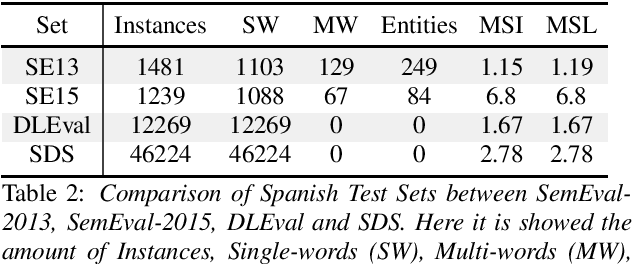
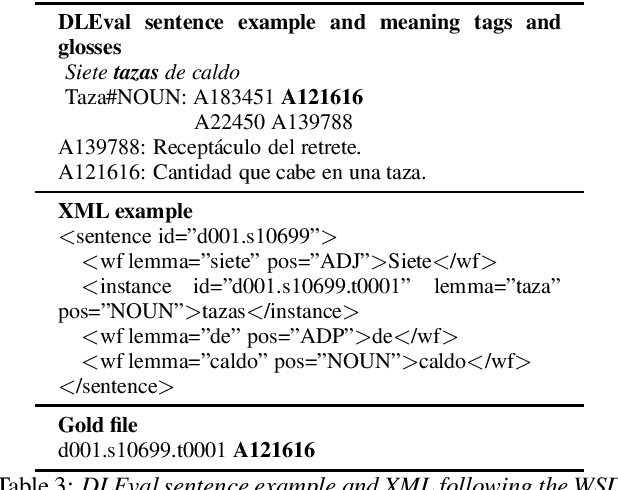
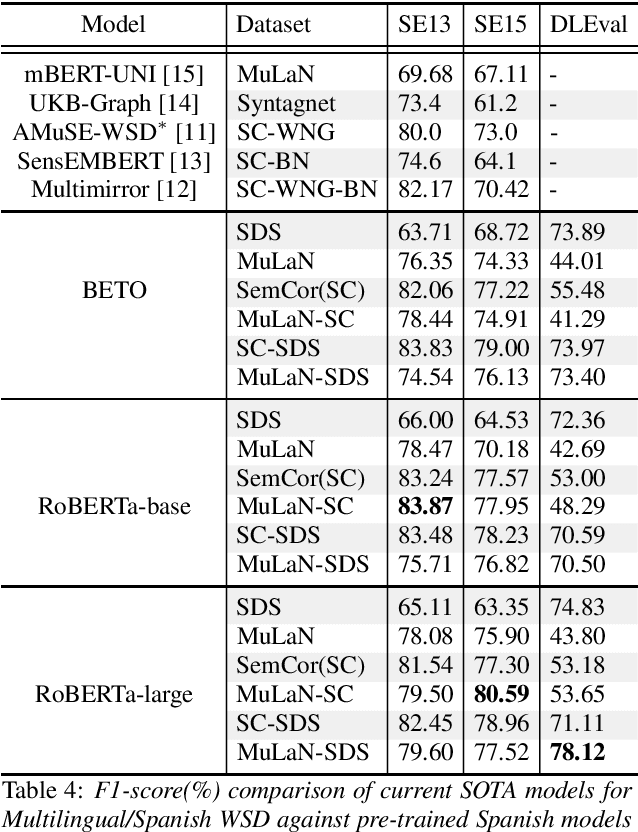
Abstract:Human language, while aimed at conveying meaning, inherently carries ambiguity. It poses challenges for speech and language processing, but also serves crucial communicative functions. Efficiently solve ambiguity is both a desired and a necessary characteristic. The lexical meaning of a word in context can be determined automatically by Word Sense Disambiguation (WSD) algorithms that rely on external knowledge often limited and biased toward English. When adapting content to other languages, automated translations are frequently inaccurate and a high degree of expert human validation is necessary to ensure both accuracy and understanding. The current study addresses previous limitations by introducing a new resource for Spanish WSD. It includes a sense inventory and a lexical dataset sourced from the Diccionario de la Lengua Espa\~nola which is maintained by the Real Academia Espa\~nola. We also review current resources for Spanish and report metrics on them by a state-of-the-art system.
Robust Wake-Up Word Detection by Two-stage Multi-resolution Ensembles
Oct 17, 2023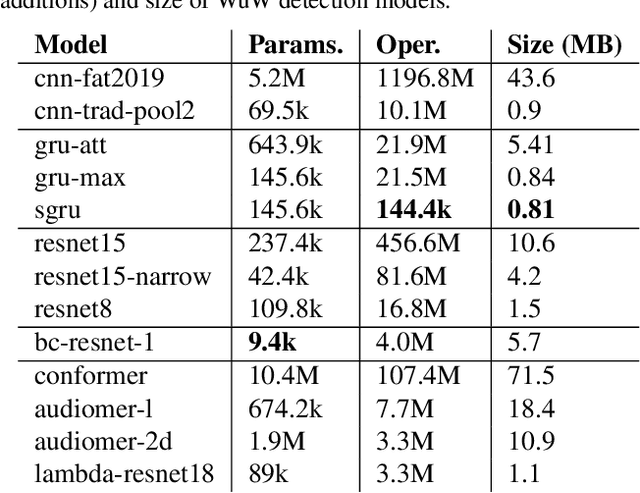
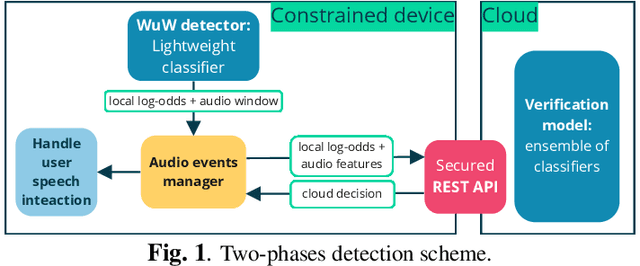
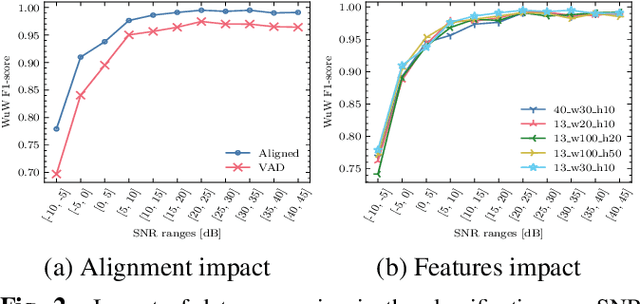
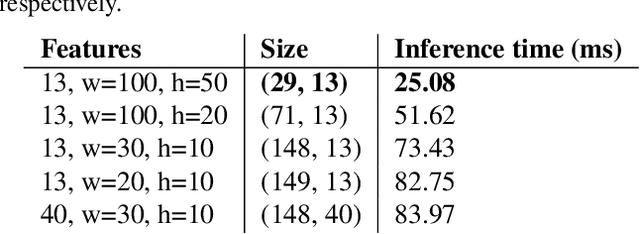
Abstract:Voice-based interfaces rely on a wake-up word mechanism to initiate communication with devices. However, achieving a robust, energy-efficient, and fast detection remains a challenge. This paper addresses these real production needs by enhancing data with temporal alignments and using detection based on two phases with multi-resolution. It employs two models: a lightweight on-device model for real-time processing of the audio stream and a verification model on the server-side, which is an ensemble of heterogeneous architectures that refine detection. This scheme allows the optimization of two operating points. To protect privacy, audio features are sent to the cloud instead of raw audio. The study investigated different parametric configurations for feature extraction to select one for on-device detection and another for the verification model. Furthermore, thirteen different audio classifiers were compared in terms of performance and inference time. The proposed ensemble outperforms our stronger classifier in every noise condition.
Scheduling Inference Workloads on Distributed Edge Clusters with Reinforcement Learning
Jan 31, 2023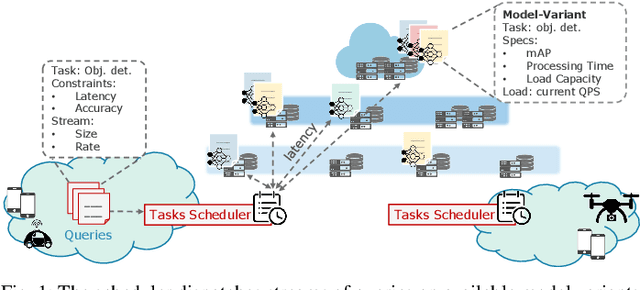
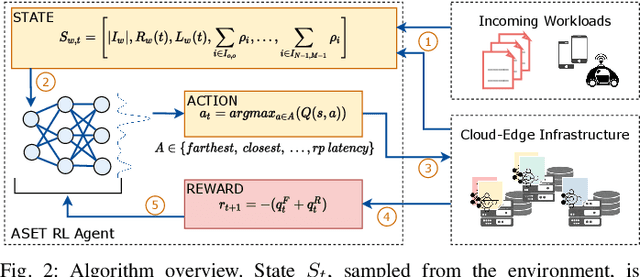
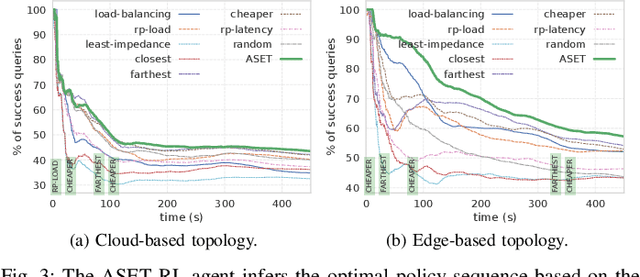
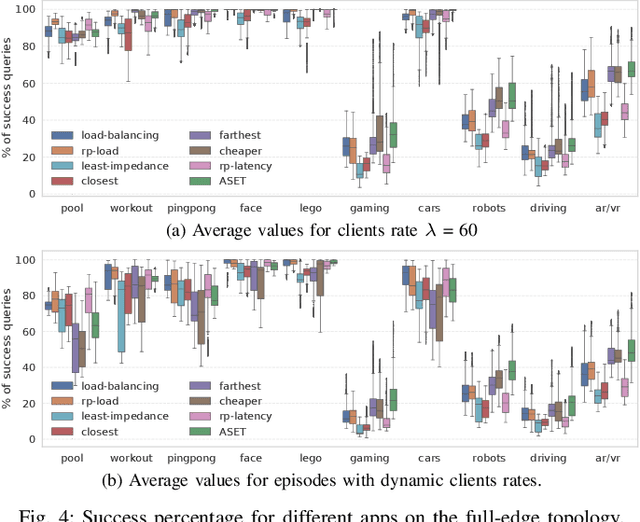
Abstract:Many real-time applications (e.g., Augmented/Virtual Reality, cognitive assistance) rely on Deep Neural Networks (DNNs) to process inference tasks. Edge computing is considered a key infrastructure to deploy such applications, as moving computation close to the data sources enables us to meet stringent latency and throughput requirements. However, the constrained nature of edge networks poses several additional challenges to the management of inference workloads: edge clusters can not provide unlimited processing power to DNN models, and often a trade-off between network and processing time should be considered when it comes to end-to-end delay requirements. In this paper, we focus on the problem of scheduling inference queries on DNN models in edge networks at short timescales (i.e., few milliseconds). By means of simulations, we analyze several policies in the realistic network settings and workloads of a large ISP, highlighting the need for a dynamic scheduling policy that can adapt to network conditions and workloads. We therefore design ASET, a Reinforcement Learning based scheduling algorithm able to adapt its decisions according to the system conditions. Our results show that ASET effectively provides the best performance compared to static policies when scheduling over a distributed pool of edge resources.
Iterative pseudo-forced alignment by acoustic CTC loss for self-supervised ASR domain adaptation
Oct 27, 2022



Abstract:High-quality data labeling from specific domains is costly and human time-consuming. In this work, we propose a self-supervised domain adaptation method, based upon an iterative pseudo-forced alignment algorithm. The produced alignments are employed to customize an end-to-end Automatic Speech Recognition (ASR) and iteratively refined. The algorithm is fed with frame-wise character posteriors produced by a seed ASR, trained with out-of-domain data, and optimized throughout a Connectionist Temporal Classification (CTC) loss. The alignments are computed iteratively upon a corpus of broadcast TV. The process is repeated by reducing the quantity of text to be aligned or expanding the alignment window until finding the best possible audio-text alignment. The starting timestamps, or temporal anchors, are produced uniquely based on the confidence score of the last aligned utterance. This score is computed with the paths of the CTC-alignment matrix. With this methodology, no human-revised text references are required. Alignments from long audio files with low-quality transcriptions, like TV captions, are filtered out by confidence score and ready for further ASR adaptation. The obtained results, on both the Spanish RTVE2022 and CommonVoice databases, underpin the feasibility of using CTC-based systems to perform: highly accurate audio-text alignments, domain adaptation and semi-supervised training of end-to-end ASR.
Data Augmentation for Low-Resource Quechua ASR Improvement
Jul 14, 2022
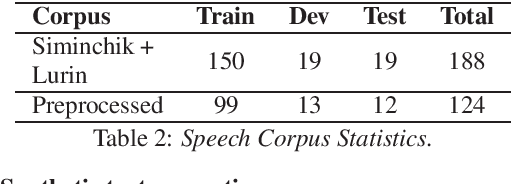
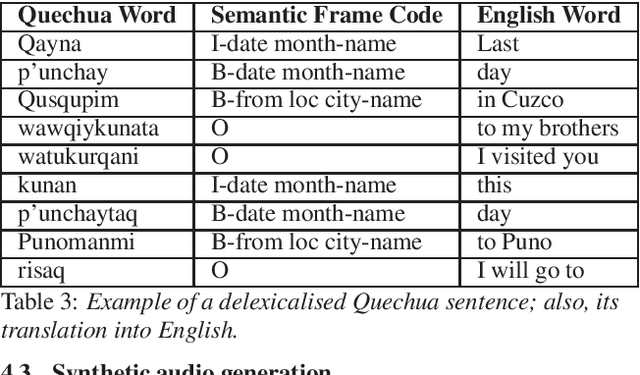
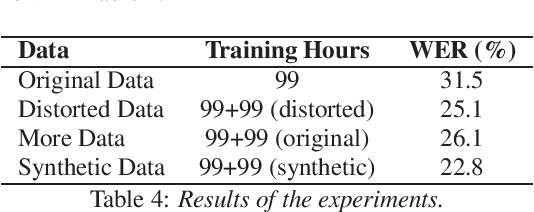
Abstract:Automatic Speech Recognition (ASR) is a key element in new services that helps users to interact with an automated system. Deep learning methods have made it possible to deploy systems with word error rates below 5% for ASR of English. However, the use of these methods is only available for languages with hundreds or thousands of hours of audio and their corresponding transcriptions. For the so-called low-resource languages to speed up the availability of resources that can improve the performance of their ASR systems, methods of creating new resources on the basis of existing ones are being investigated. In this paper we describe our data augmentation approach to improve the results of ASR models for low-resource and agglutinative languages. We carry out experiments developing an ASR for Quechua using the wav2letter++ model. We reduced WER by 8.73% through our approach to the base model. The resulting ASR model obtained 22.75% WER and was trained with 99 hours of original resources and 99 hours of synthetic data obtained with a combination of text augmentation and synthetic speech generati
Voice Quality and Pitch Features in Transformer-Based Speech Recognition
Dec 21, 2021
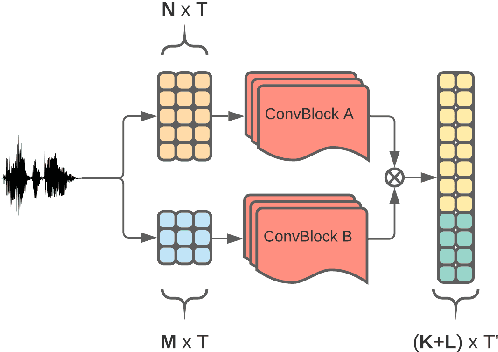
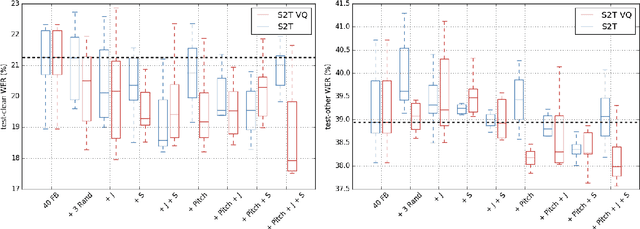
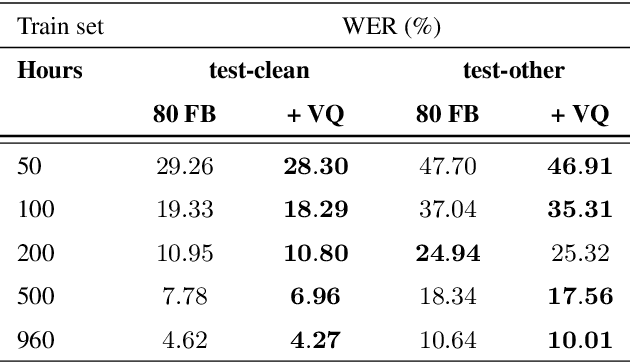
Abstract:Jitter and shimmer measurements have shown to be carriers of voice quality and prosodic information which enhance the performance of tasks like speaker recognition, diarization or automatic speech recognition (ASR). However, such features have been seldom used in the context of neural-based ASR, where spectral features often prevail. In this work, we study the effects of incorporating voice quality and pitch features altogether and separately to a Transformer-based ASR model, with the intuition that the attention mechanisms might exploit latent prosodic traits. For doing so, we propose separated convolutional front-ends for prosodic and spectral features, showing that this architectural choice yields better results than simple concatenation of such pitch and voice quality features to mel-spectrogram filterbanks. Furthermore, we find mean Word Error Rate relative reductions of up to 5.6% with the LibriSpeech benchmark. Such findings motivate further research on the application of prosody knowledge for increasing the robustness of Transformer-based ASR.
English Accent Accuracy Analysis in a State-of-the-Art Automatic Speech Recognition System
May 09, 2021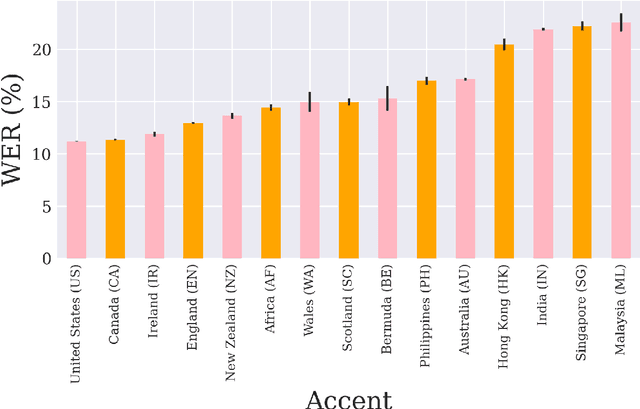

Abstract:Nowadays, research in speech technologies has gotten a lot out thanks to recently created public domain corpora that contain thousands of recording hours. These large amounts of data are very helpful for training the new complex models based on deep learning technologies. However, the lack of dialectal diversity in a corpus is known to cause performance biases in speech systems, mainly for underrepresented dialects. In this work, we propose to evaluate a state-of-the-art automatic speech recognition (ASR) deep learning-based model, using unseen data from a corpus with a wide variety of labeled English accents from different countries around the world. The model has been trained with 44.5K hours of English speech from an open access corpus called Multilingual LibriSpeech, showing remarkable results in popular benchmarks. We test the accuracy of such ASR against samples extracted from another public corpus that is continuously growing, the Common Voice dataset. Then, we present graphically the accuracy in terms of Word Error Rate of each of the different English included accents, showing that there is indeed an accuracy bias in terms of accentual variety, favoring the accents most prevalent in the training corpus.
Efficient Keyword Spotting through long-range interactions with Temporal Lambda Networks
Apr 16, 2021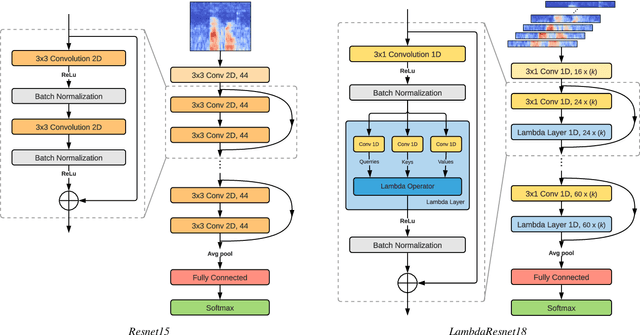
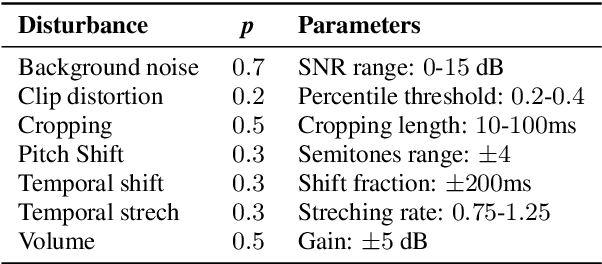
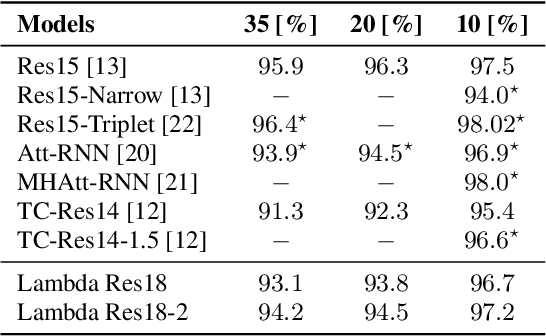
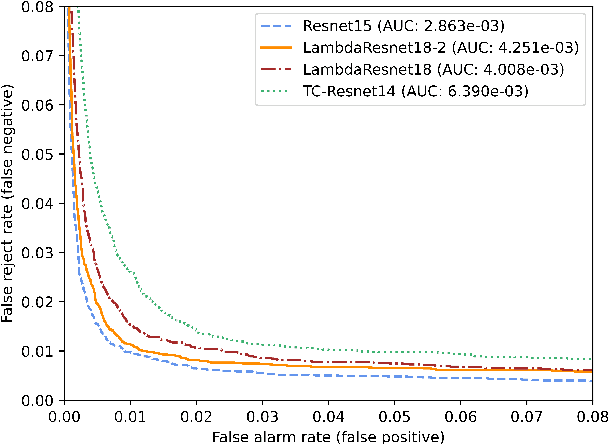
Abstract:Recent models based on attention mechanisms have shown unprecedented performance in the speech recognition domain. These are computational expensive and unnecessarily complex for the keyword spotting task where its main usage is in small-footprint devices. This work explores the application of the Lambda networks, a framework for capturing long-range interactions, within this spotting task. The proposed architecture is inspired by current state-of-the-art models for keyword spotting built on residual connections. Our main contribution consists on swapping the residual blocks by temporal Lambda layers thus bypassing the expensive computation of attention maps, largely reducing the model complexity. Furthermore, the proposed Lambda network is built upon uni-dimensional convolutions which also dramatically decreases the number of floating point operations performed along the inference stage. This architecture does not only reach state-of-the-art accuracies on the Google Speech Commands dataset, but it is 85% and 65% lighter than its multi headed attention (MHAtt-RNN) and residual convolutional (Res15) counterparts, while being up to 100x faster than them. To the best of our knowledge, this is the first attempt to examine the Lambda framework within the speech domain and therefore, we unravel further research and development of future speech interfaces based on this architecture.
Speech Enhancement for Wake-Up-Word detection in Voice Assistants
Jan 29, 2021

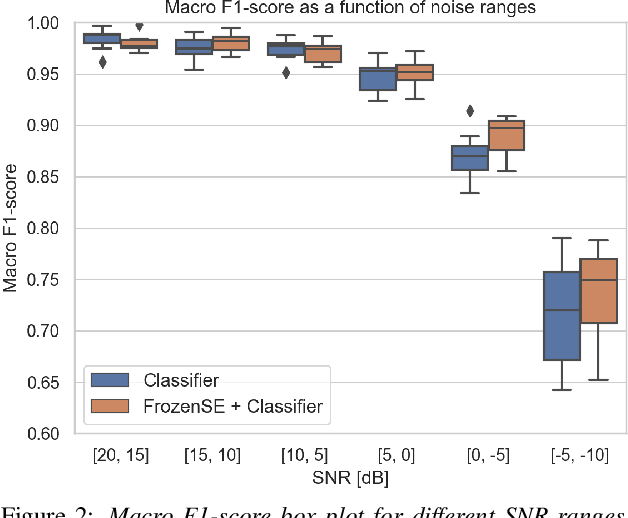

Abstract:Keyword spotting and in particular Wake-Up-Word (WUW) detection is a very important task for voice assistants. A very common issue of voice assistants is that they get easily activated by background noise like music, TV or background speech that accidentally triggers the device. In this paper, we propose a Speech Enhancement (SE) model adapted to the task of WUW detection that aims at increasing the recognition rate and reducing the false alarms in the presence of these types of noises. The SE model is a fully-convolutional denoising auto-encoder at waveform level and is trained using a log-Mel Spectrogram and waveform reconstruction losses together with the BCE loss of a simple WUW classification network. A new database has been purposely prepared for the task of recognizing the WUW in challenging conditions containing negative samples that are very phonetically similar to the keyword. The database is extended with public databases and an exhaustive data augmentation to simulate different noises and environments. The results obtained by concatenating the SE with a simple and state-of-the-art WUW detectors show that the SE does not have a negative impact on the recognition rate in quiet environments while increasing the performance in the presence of noise, especially when the SE and WUW detector are trained jointly end-to-end.
 Add to Chrome
Add to Chrome Add to Firefox
Add to Firefox Add to Edge
Add to Edge